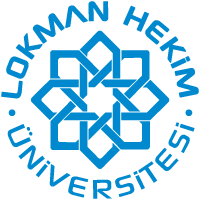| dc.description.abstract | Gold nanoparticles (AuNPs) have been widely used in many biological and biomedical applications. In this regard, their surface modification is of paramount importance in order to increase their cellular uptake, delivery capability, and optimize their distribution inside the body. The aim of this study was to examine the effects of AuNPs on cytotoxicity, oxidant/antioxidant parameters, and DNA damage in HepG2 cells and investigate the potential toxic effects of different surface modifications such as polyethylene glycol (PEG) and polyethyleneimine (PEI; molecular weights of 2,000 (low molecular weight [LMW]) and 25,000 (high molecular weight [HMW]). The study groups were determined as AuNPs, PEG-coated AuNPs (AuNPs/PEG), low-molecular weight polyethyleneimine-coated gold nanoparticles (AuNPs/PEI LMW), and high-molecular weight polyethyleneimine-coated gold nanoparticles (AuNPs/PEI HMW). After incubating HepG2 cells with different concentrations of nanoparticles for 24 hours, half maximal inhibitory concentrations (the concentration that kills 50% of the cells) were determined as 166.77, 257.73, and 198.44 µg/mL for AuNPs, AuNPs/PEG, and AuNPs/PEI LMW groups, respectively. Later, inhibitory concentration 30 (IC, the concentration that kills 30% of the cells) doses were calculated, and further experiments were performed on cells that were exposed to IC doses. Although intracellular reactive oxygen species levels significantly increased in all nanoparticles, AuNPs as well as AuNPs/PEG did not cause any changes in oxidant/antioxidant parameters. However, AuNPs/PEI HMW particularly induced oxidative stress as evidence of alterations in lipid peroxidation and protein oxidation. These results suggest that at IC doses, AuNPs do not affect oxidative stress and DNA damage significantly. Polyethylene glycol coating does not have an impact on toxicity, however PEI coating (particularly HMW) can induce oxidative stress. | en_US |















